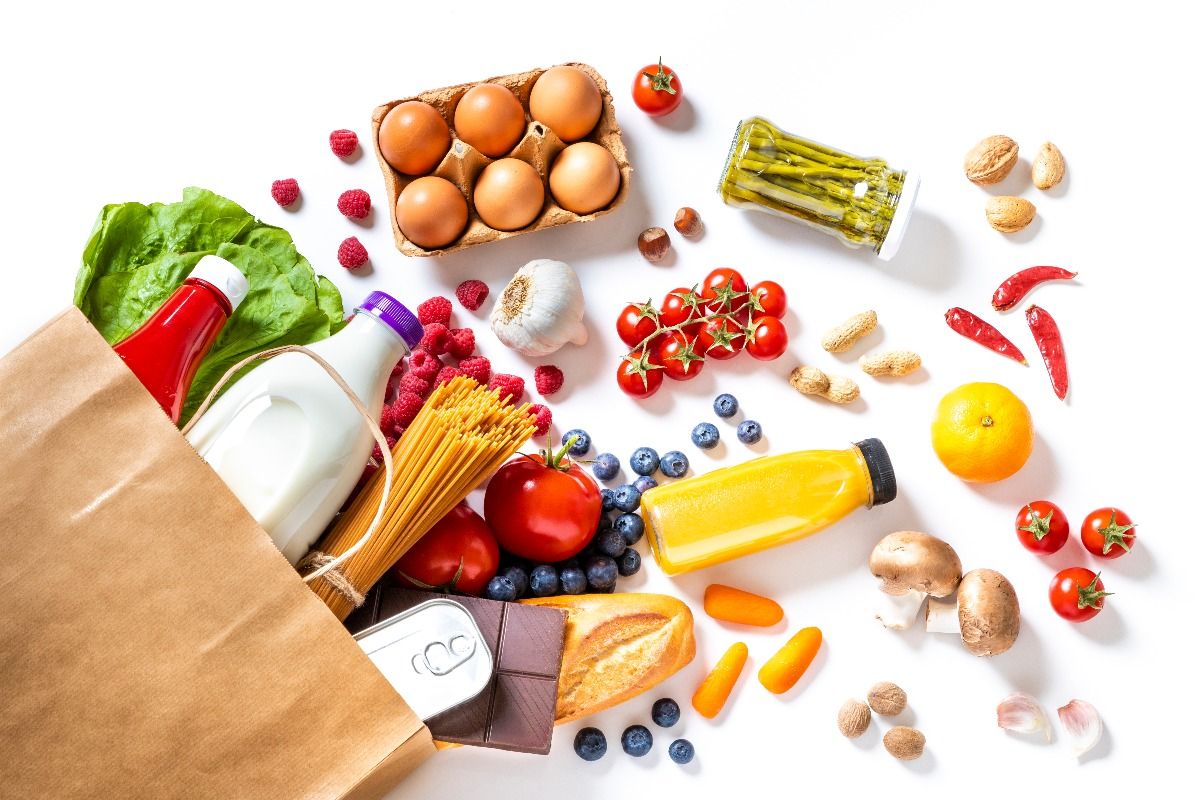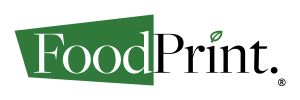Meatloaf, roast chicken, chickpea stew: What's for dinner tonight? When you are thinking about what to make, how much does sustainability factor into your menu and recipe decisions? Here at FoodPrint, we've made it our mission to help you incorporate your desire to support a better food system into your grocery or farmers' market shopping. There are many signs that shoppers are looking for food that is better for animals, people and planet. For example, organic food sales grew a record five percent in 2019, continuing an upward trend, and you can find organic products in three out of four conventional grocery stores. Even fast food chains like Just Salad and Chipotle are incorporating labels that help people track the environmental impacts of their food choices.
Two new guidebooks also indicate shoppers are looking for more guidance: Sophie Egan's "How to Be A Conscious Eater" and Kate Bratskeir's forthcoming "A Pocket Guide to Sustainable Food Shopping" both offer to help you navigate the grocery store, read labels and shop, all while reducing your own impact and foodprint. The ideas they put forth echo ours, and we've consolidated them here into six key steps.
Start small
If you are just getting started on your sustainable shopping journey, know that it's common to get caught up in reactions like eco-anxiety, worrying that you'll never be "perfect" while continuing to use plastic bags, eat foods with a high footprint and throw leftovers away. Bratskeir suggests starting small, with one change. Take a look at your grocery shopping list and think about forgoing a product packed in plastic, making your own version, or finding an alternative that is packaged in a reusable container.
Egan frames sustainable grocery shopping — similarly to how we talk about foodprints — around a decision-making compass of whether the food is good for you ("nutritious, wholesome, safe"), good for others (animals and people across our food systems), and good for the planet (when possible even restoring the ecosystem, as opposed to just not destroying it). "Ask yourself if you are optimizing at least one of these factors with every food choice," she writes. In some cases, checking off one may be enough — such as a farm fresh, wholesome dinner cooked with care. In others, you may choose products that check off all three characteristics.
Learn more about getting started with our guide to sustainable shopping.
Reduce your food waste
Both Egan and Bratskeir write about the importance of reducing food waste, which starts with grocery shopping. The first step is creating a proper shopping plan and buying only what you need. When you get those groceries home, make sure to store foods properly to reduce spoilage. And finally, reframe how you think about waste. Instead of throwing out odds and ends you'd normally toss, turn bits of leftovers into a new meal. Use waste-free cooking techniques like saving onion and garlic peels to make stock; using the stems of hearty greens for smoothies; and preserving extra vegetables with freezing or dehydrating techniques. Simply cooking your own meals helps make a dent in your waste. When you cook at home, there won't be any take-out containers, and you're less likely to waste ingredients you have picked out by hand.
Learn more techniques for storing food properly and reducing food waste.
Eat less meat, but better meat
Although home food waste is often focused on fruits and vegetables, Egan reminds readers that because of the huge inputs required and intensive impact of meat production, red meat (beef, pork, lamb) is the most important food to not waste. More than any other food, she writes, make sure to use leftovers including red meat.
For the same reasons, cutting back on meat consumption in general is one of the best ways you can reduce your foodprint. Industrial meat production is inhumane for animals, pollutes waterways and soil and is a major contributor to global greenhouse emissions. It's also simply not efficient. "Animal-based foods are less efficient uses of natural resources because you're growing animal feed and relying on these creatures to convert that into food that humans eat, rather than just growing food for humans to eat directly," explains Egan. "By just about every metric used to evaluate the environmental impact of making food, the plant kingdom beats the animal kingdom by a long shot."
By cutting back on meat consumption just one day a week, you can reduce your personal impact by 15 percent. Some people cut back by skipping meat on Mondays; others skip meat for breakfast and lunch, eating it only at dinner. Another approach is to combine vegetables and meat — such as blended burgers — to reduce the overall quality of meat you are eating in typical meat dishes. And when do you purchase meat, look for pasture-fed, responsibly produced meat, ideally from farmers practicing regenerative farming techniques, which improve the quality of the land being used to farm, rather than diminish it.
Learn more ways to reduce your meat consumption.
Shop local and organic
Probably the most widely available certified label out there is USDA Certified Organic. When you can find and afford it, Egan suggests choosing organic. "Conventional industrial agriculture is characterized by maximizing the yield of crops above all else," she writes, "doing so through energy-intensive farming practices and synthetic chemicals such as fertilizers, at the expense of the surrounding environment." The USDA Organic certification, which is "arguably the most rigorously backed certification on the market," she explains, guarantees farmers use pest and weed mitigation techniques that are less harmful to the environment, the surrounding communities and our health.
In order to be strategic about your organic purchasing, the Environmental Working Group's Dirty Dozen and Clean Fifteen is a good way to hone in on foods that are most or least likely to have heavy pesticide loads. "[It's] unrealistic for most of us to have the budget to buy organic everything" as Egan says. Beyond labels, when possible, shop from local farmers and producers. While producers at farmers' markets or farm stands are less likely to have certifications, you can ask questions about production methods and issues that are important to you.
Learn more about the organic label.
Understand food labels
When you are shopping consciously, certain words on packaging might seem more wholesome than they actually are. "Don't just close your eyes and swallow," writes Bratskeir. "Instead look out for words and phrasing that hint at shadiness, and start following certifications that you trust." Labels such as healthy, natural, superfruit/food, plant-based and sustainable have vague — or no — food industry guidelines, often leaving a lot up to interpretation.
Instead, it's recommended shoppers seek out trusted certifications that guarantee foods have been produced in a way that is fair to the planet, animals and workers. So if you're interested in animal welfare, don't just look for the words "pasture-raised," look for a label that is third party verified, like Animal Welfare Approved, or Humane Certified. If you're interested in worker welfare, look for Food Justice Certified or the Fair Food Program. There are also a number of niche labels that support various conservation efforts, such as an Audubon Certification for meat that guarantees producers meet standards that overlap with USDA Organic and also requires ranchers to protect the bird-friendly, native plants on their grazing land.
Learn more about food labels with our guide.
Avoid packaging and BYO bags
Here at FoodPrint, we are passionate about helping you understand that food packaging — in addition to the food itself — has a foodprint. Although there are many reasons to cut way back on single-use plastic, Eagan gives a great one: "Plastic pollution is one of the most serious threats to the health of our ocean," she writes, citing an estimate that suggests by 2050 the ocean will house proportionally more plastic than fish. Reducing the amount of plastic you bring into your home by choosing to grocery shop sustainably is a great way to keep it out of your house, and eventually the trash.
When you look at your shopping list, think about items that come in single-use plastic. Can you buy a larger size to reduce the packaging waste? Or, look for another brand using more sustainable packaging. When possible, choose cans over glass over plastic. Bratskeir also challenges you to ask yourself, "Do I really need this today?", especially when it comes to produce that is unnecessarily wrapped in plastic wrap or stored in plastic containers. Can you forgo that ingredient this time?
And don't forget to bring your own reusable grocery bags, as well as produce bags. While some cities and states have banned them, plastic bags are still used in the majority of stores nationwide. They aren't recyclable, and clog machinery when people put them in recycling bins anyway. This is an easy win for when you grocery shop sustainably — bring a tote!
Get more ideas for using less plastic in the kitchen and take our pledge to cut out single-use plastics.




Shares